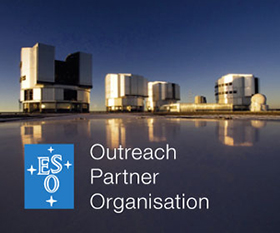
Spiral-like patterns of star formation discovered in old galaxies
A study led by Instituto de Astrofísica e Ciências do Espaço (IA) researchers, has profound implications on the understanding of the assembly history of early-type galaxies.
Read more

VLT detects unexpected giant glowing halos around distant quasars
Observations made by the MUSE instrument have detected, for the first time in this type of survey, that all observed quasars had gas halos around them.
Read more

ESPRESSO sees the light at the end of the tunnel
An internacional team of the ESPRESSO consortium, lead in Portugal by the Instituto de Astrofísica e Ciências do Espaço (IA), has made the first test for ESPRESSO, the next generation high resolution spectrograph.
Read more

Stellar activity can mimic misaligned exoplanets
Simulations made by Instituto de Astrofísica e Ciências do Espaço (IA) researchers revealed that stellar activity can influence the measurement of an exoplanet spin-orbit tilt.
Read more

Black Holes might not be dead-ends after all
Physical bodies may successfully reach the other side of a black hole, suggests a study co-authored by Diego Rubiera-Garcia, of Institute of Astrophysics and Space Sciences.
Read more

Results of CHEOPS competition announced
Three thousand drawing, from children all over Europe, will be going to space in the European Space Agency’s (ESA) mission CHEOPS, whose portuguese partners are Instituto de Astrofísica e Ciências do Espaço (IA) and Deimos Engenharia.
Read more

Portugal involved in the construction of instruments for the largest telescope in the world
HIRES and MOS will be two of the main instruments for the biggest telescope of the next generation, ESO’s E-ELT, and have a strong involvement of Instituto de Astrofísica e Ciências do Espaço (IA).
Read more

Ignite Astro tour
Researchers from the Instituto de Astrofísica e Ciências do Espaço will tour the country and bring the Universe to places with lesser access to science outreach.
Read more

